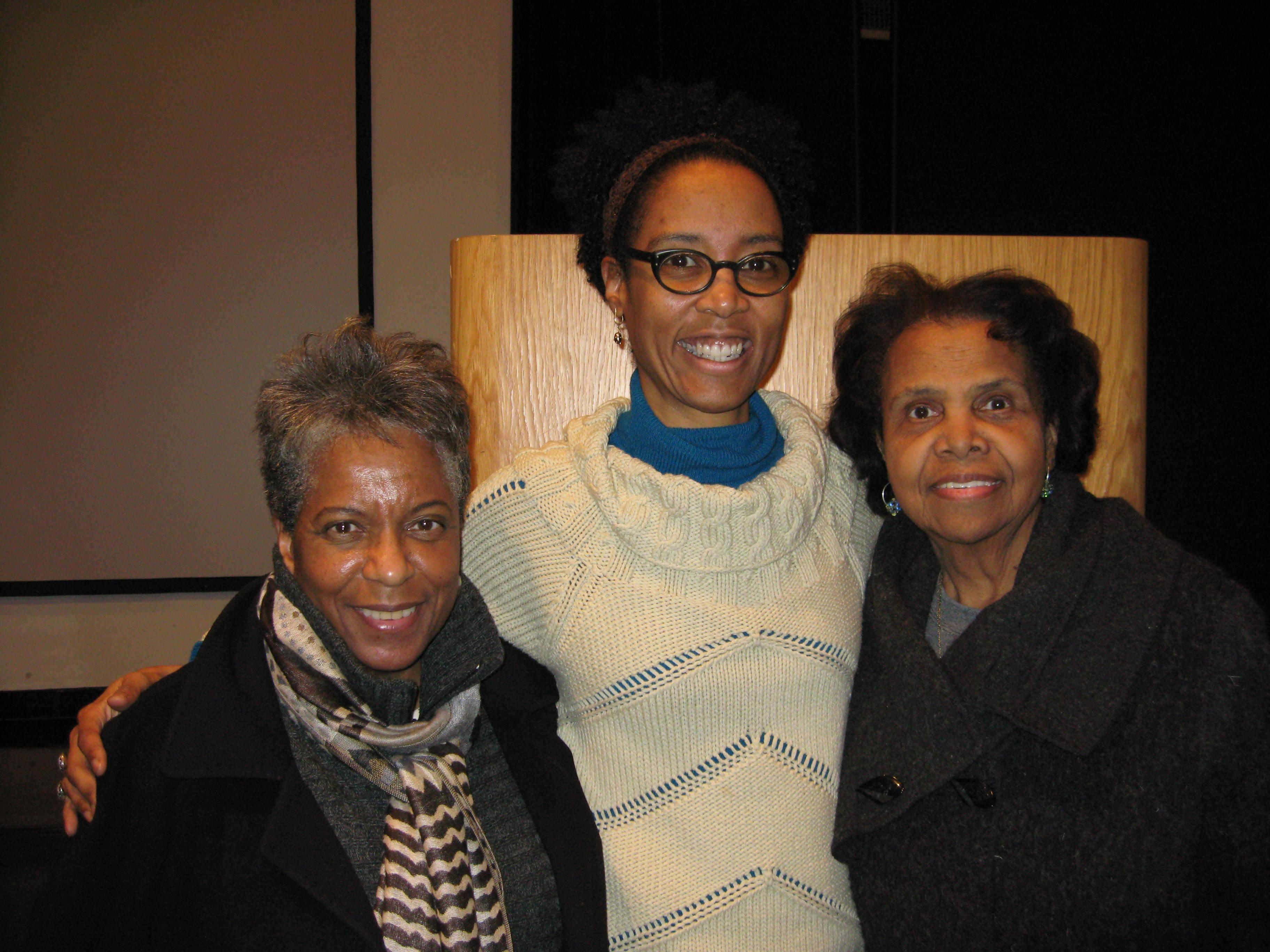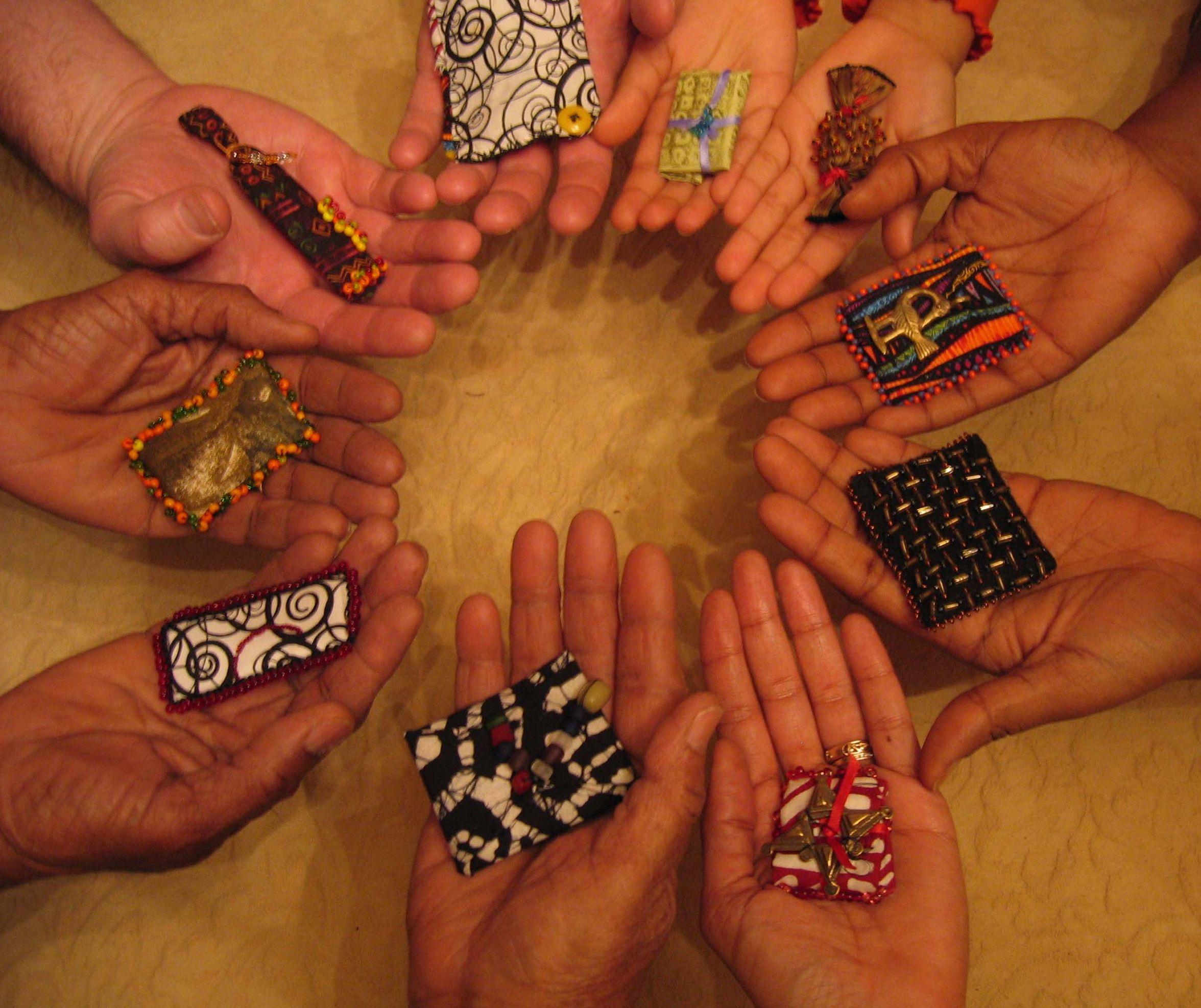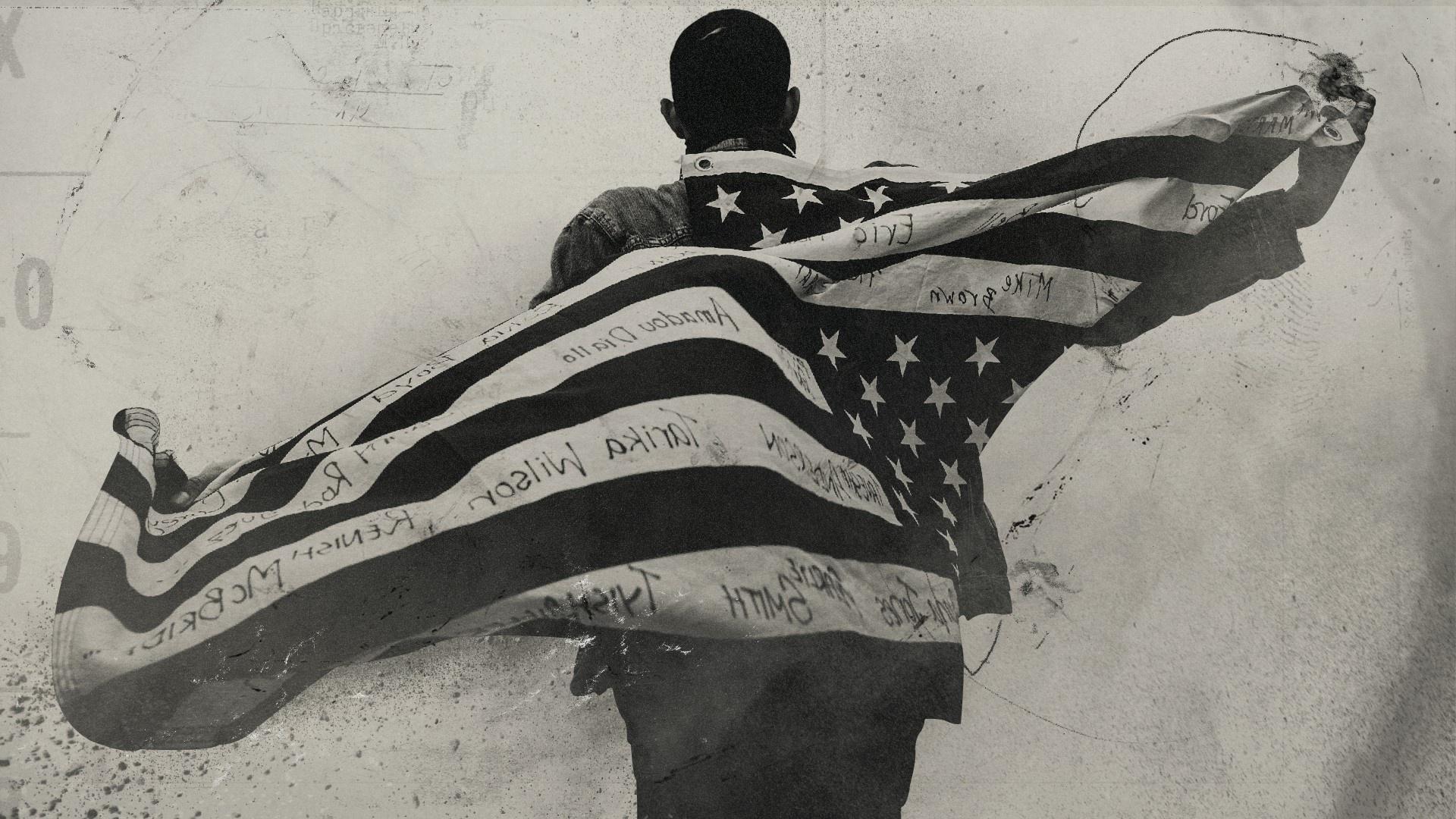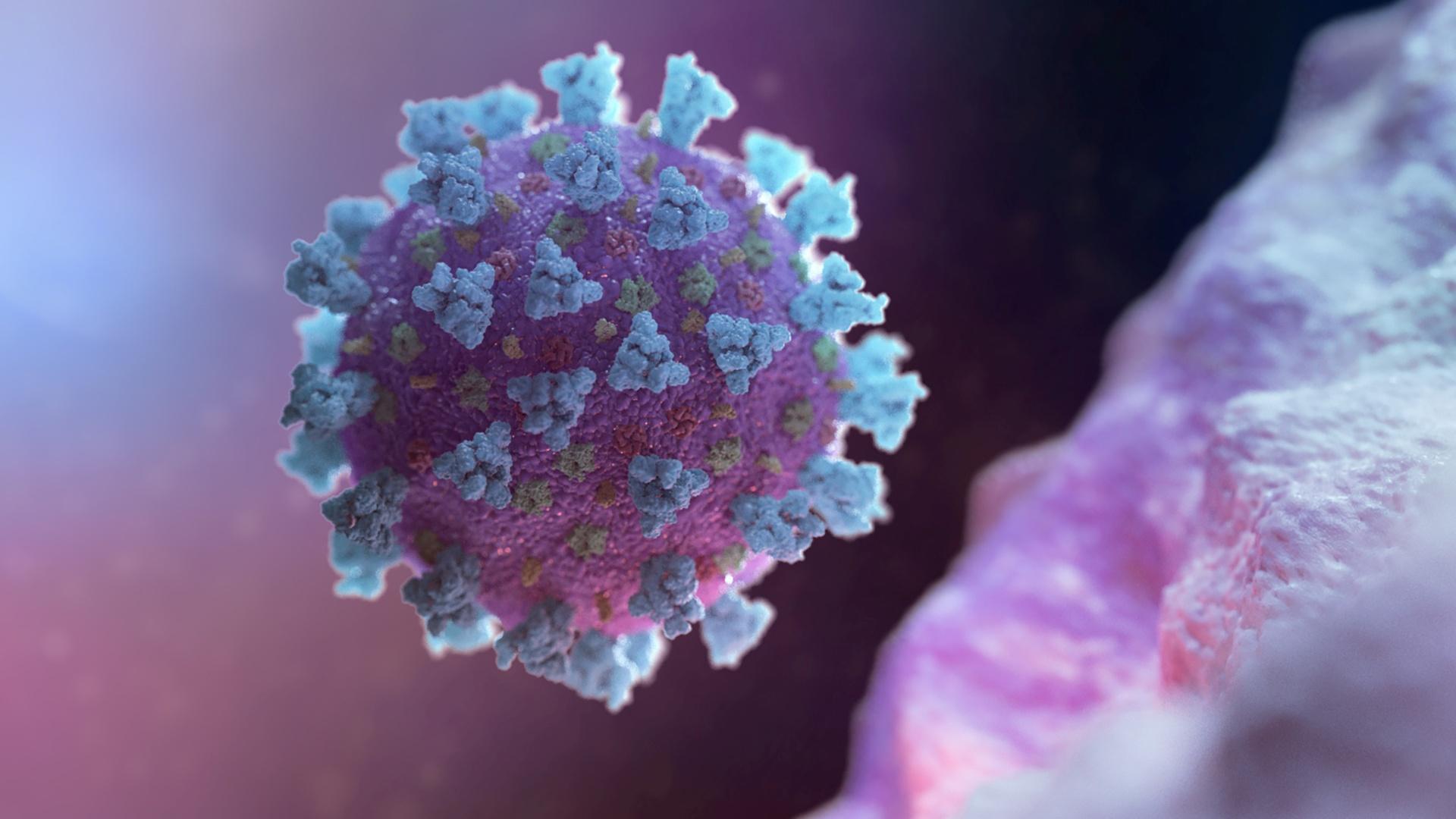#PBSForTheArts Artist Spotlight
Sonya Clark

December 3, 2021
By Jessica Jacolbe
Detroit was one of the hardest hit cities in America that lost thousands of lives during the pandemic. The Healing Memorial is an ongoing project to commemorate the city’s lost loved ones. In August 2021, the public art installation, developed by textile and social practice artist Sonya Clark, was unveiled at the TCF Center. The massive wall features 2,000 handmade pouches crafted by Detroit residents with fabric, beads, and string. The artist behind this moving piece of work spoke with PBS for the Arts about her history with the city of Detroit and how her Beaded Prayers Project has continued to transform over the past two decades.
There is a communal aspect to your artwork. How does your artistic practice involve collaboration with others, like in the Healing Memorial?
Sonya Clark: As an artist, I am often making objects that I hope outlive me and connects me with others. So I do think that artwork happens through me, in the sense that I am in this legacy of my ancestors and those who come after me. A lot of the work that I do does get into this place of community and collaboration.
I don't think that collaboration means that people are individually making a work as they are with the Healing Memorial. Even if someone is standing before an individual object that I've made, they're in dialogue with that object [even if] I'm not there when they're experiencing that object. That's the kind of connection and collaboration that I hope far outlasts my lifetime, [and] that my artwork will continue well beyond me, in the same way that artworks or cultural works that have influenced me have outlived their physical presence on this planet.
Can you describe the history of the Beaded Prayers Project and how the beads and material inspire your work?
When I was an assistant professor at the University of Wisconsin-Madison, I had been interested in cultural objects that connect generations. I had studied amulets while I was a graduate student just outside of the Detroit area at the Cranbrook Art Museum.
I had become aware of them from West African traditions. In the case of warriors’ cloth shirts, multiple amulets will be attached to a garment, and [passed down] from generation to generation. It becomes a cumulative heirloom of protection and resilience and connection to one's ancestors.
The more research that I did, I found resonance across other cultures as well, not just in the African diaspora. I think of Jewish mezuzahs as being a kind of amulet, though not worn on the body but on a door post. Rosary beads, for example, the words “bead” and “prayer” get connected. Those two words don't sound alike, but the old English word for bead and prayer means to ask or to pray.
So it wasn't that I was doing anything new, except that I was highlighting something that human beings have been doing for a long time and asking people to participate by making the Beaded Prayers Project. The exhibition has been traveling since [1999], and the Healing Memorial in Detroit is an offshoot of that.

You traveled to Detroit and conducted workshops for the personalized pouches dedicated to lost loved ones. What was your approach in this kind of contemplative setting and how did you feel during those workshops?
Well, I have to say that the idea of working with people as they're bringing something of their interiority [or] emotional space into physical manifestation through an artwork has been part of the project from the Beaded Prayers Project, to the Healing Wall, and everything in between.
The range of people was a really beautiful thing. I wish I could have spent more time in Detroit. It was a very short amount of time that I was able to train the volunteers and meet people who were initiating the project.
The interaction is the thing that feeds me. The Beaded Prayers Project and this next chapter of it have made me a better artist because people bring their stories. They say it reminds [them] of something that [they] do in [their] family as a tradition. It ends up having this connection to multiple traditions, but also multiple people and multiple people's stories. It enriches the project, makes it stronger, and more meaningful both individually and as a collective.

What has your relationship with the city of Detroit been like and how was it enhanced because of the project?
I consider Detroit a second home of sorts, not the home I was born in, but a home nonetheless. It was some of the people who belong to the arts community [of Detroit] who reached out to me knowing that I had done the beaded project in the past and thought that a version of that might be something that could help heal Detroit as that community and the greater metro community are dealing with the pandemic and its repercussions.
There's so much about the United States of America that we think of as being American culture in music, dance, [literature], and all of these things. A lot of it points back to Detroit. So while this is very much a Detroit project, I think of Detroit as being one of the one of the pulses of America. While the healing memorial is centered in Detroit, it's also centered in the heart of this nation.
How do you hope to see your project live on as a source of healing?
One thing that I do like about the project is this amplification of the diaspora, and this sense of taking an art form or a cultural practice that I first came to know about through West Africa and then started seeing it emerge everywhere.
I'm hoping that one of the things that will happen with the Healing Memorial as an offshoot of the Beaded Prayers Project is that people will say, “I can do this for anything.” I mean, if there's a birth in my family, we might gather and make beaded prayers to celebrate that new life that has joined our family. If someone needs healing, we might make beaded prayers to heal them so that it's just amplifying a practice that already exists and claiming that so that the artist belongs to everyone.
Note: This interview has been condensed and edited for clarity.
The Healing Memorial was created in partnership with the Detroit Riverfront Conservancy, the City of Detroit Office of Arts and Culture, and the Cranbrook Art Museum. Sonya Clark’s latest work, Finding Freedom, will be on display at the Telfair Museum in Savannah, Georgia through January 17, 2022.
Recent Articles

PBS Nominated for Multiple Emmys
PBS received more Emmy nominations than any other organization.

Race and Racism in America
Watch a collection of films and specials that highlight and add context to the many aspects of race and racism in our country.

Violence Against Asian Americans
If you are hurting, needing comfort or are curious to learn, videos are available for streaming. Additionally, resources to learn how to fight violence against Asian Americans are available.

Continuing Coronavirus Coverage and Resources
Health officials are working to increase awareness on the virus and help diminish misleading claims or false information.


